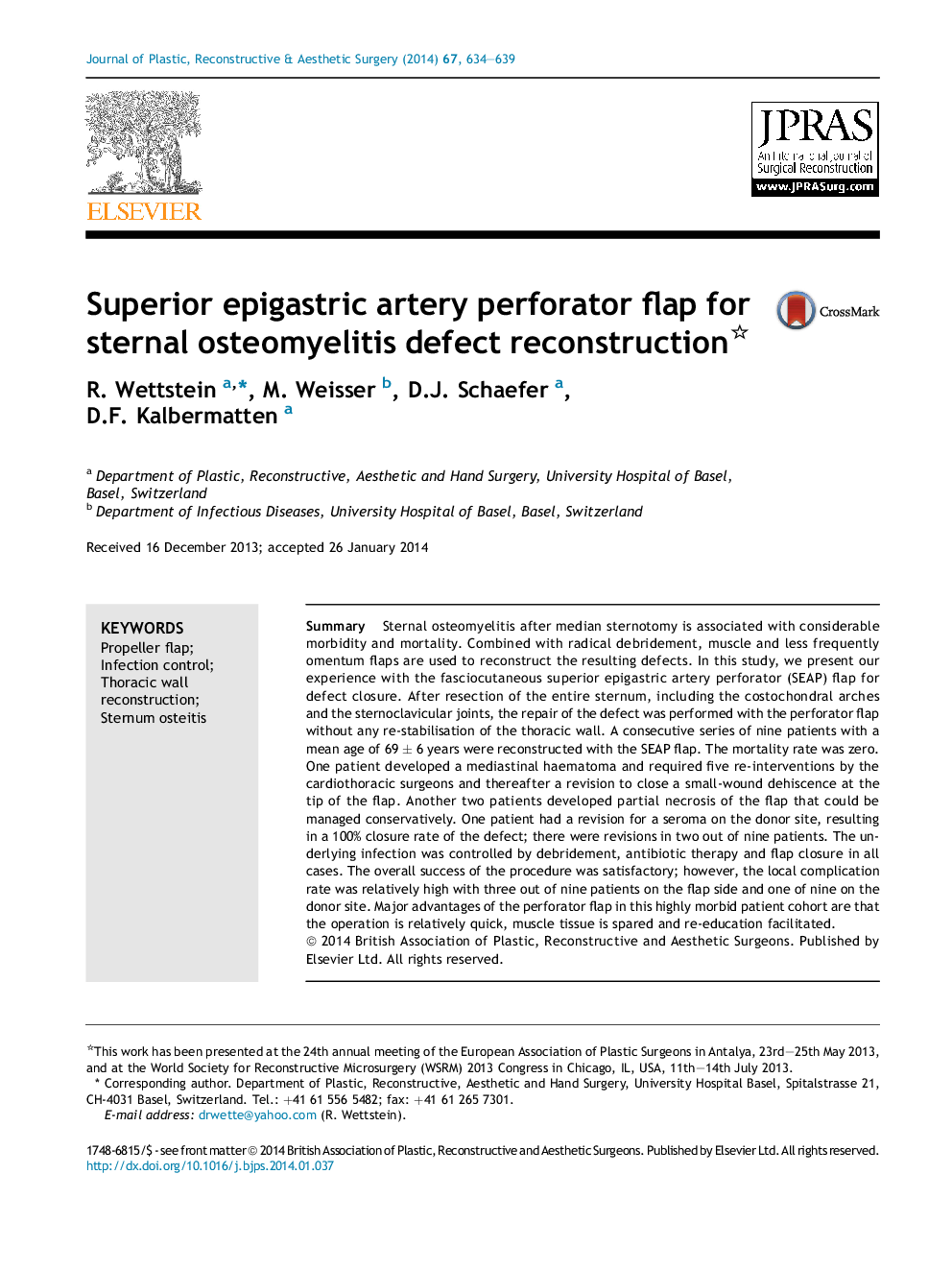| Article ID | Journal | Published Year | Pages | File Type |
|---|---|---|---|---|
| 4117798 | Journal of Plastic, Reconstructive & Aesthetic Surgery | 2014 | 6 Pages |
SummarySternal osteomyelitis after median sternotomy is associated with considerable morbidity and mortality. Combined with radical debridement, muscle and less frequently omentum flaps are used to reconstruct the resulting defects. In this study, we present our experience with the fasciocutaneous superior epigastric artery perforator (SEAP) flap for defect closure. After resection of the entire sternum, including the costochondral arches and the sternoclavicular joints, the repair of the defect was performed with the perforator flap without any re-stabilisation of the thoracic wall. A consecutive series of nine patients with a mean age of 69 ± 6 years were reconstructed with the SEAP flap. The mortality rate was zero. One patient developed a mediastinal haematoma and required five re-interventions by the cardiothoracic surgeons and thereafter a revision to close a small-wound dehiscence at the tip of the flap. Another two patients developed partial necrosis of the flap that could be managed conservatively. One patient had a revision for a seroma on the donor site, resulting in a 100% closure rate of the defect; there were revisions in two out of nine patients. The underlying infection was controlled by debridement, antibiotic therapy and flap closure in all cases. The overall success of the procedure was satisfactory; however, the local complication rate was relatively high with three out of nine patients on the flap side and one of nine on the donor site. Major advantages of the perforator flap in this highly morbid patient cohort are that the operation is relatively quick, muscle tissue is spared and re-education facilitated.
